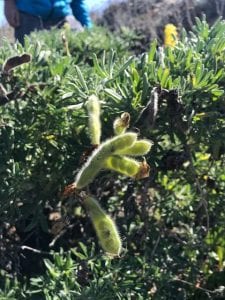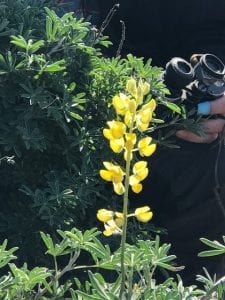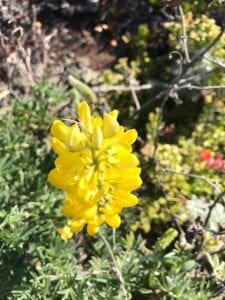On the 19th of September the class took a trip to the coast south of USF to see the Lupinus arboreus population. The first stop was on atop a hill side parallel to the ocean. There the class observed a few Lupinus plants that had no flowers blooming. While the plants were not blooming, the professor took the time to elaborate on the environment and the survival the plant species. The plant exists close to the ground to avoid the wind and loss of water. The Lupins population can survive in the sandy landscape with a low content of water. The yellow flowers that bloom on it in the spring are meant to attract bees for the pollination process. Green pods are formed from the yellow flower and hold seeds. The seeds can be dispersed when the pods dry which allows for the twisting and opening of the structure. It was also noted that the plants do not grow near each other, but rather a few meters away from each other.
The second stop of the trip was a across the main highway where the class spotted a few blooming Lupinus arboreus plants. The plants were slightly larger than the ones first observed and the pods were green rather than dark gray-brown. The professor spoke on the relationship between the different populations of Lupinus populations along the California coast. There was a comparison between the purple and and yellow Lupinus plants found in the north and the yellow ones found in the south. While it is not known for certain as to how closely related each one is to each other, it is hypothesized that the yellow plants form the south are more closely related to the yellow ones in the north. Before leaving the inside of the flower was analyzed. The stamen and pistil were identified. Pictures were taken of the pods and the flowers before leaving the site to document the trip.
Location:
Images: Dry Pods
Image: Green Pods
Images: Flowering Lupinus Arboreus Plants








Leave a Reply